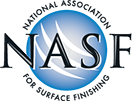| Presented in Partnership with: | |||
 |
 |
 |
 |
Date: June 6, 1998
To: Mr. Joseph O. Grau
Monarch Analytical Laboratories, Inc.
349 Towahawk Drive
Maumee, Ohio 43537-1696From: Gene Riley
Subject: Comments for Questions in Correspondence
I have tried to address most of your concerns and questions that you quoted in the letters:
March 13, 1998 Letter
- Statement - The 33 to 66 µg Cr+6 sample catch requirement appears to be very restrictive and inconsistent with the range of the CARB Method 425.
Response - When using the CARB method, the collected sample is divided among several different train fractions (probe rinse , 1st impg, 2nd impg, filter, etc.). For low Cr+6 levels, these different fractions can either be combined or analyzed separately. The method recommends analyzing 1) the probe rinse, 2) the 1st impinger, and 3) the 2nd impinger separately when sampling low concentrations; the filter is to be added to one of the impingers.
Therefore, when the CARB method minimum detection limit of 2 µg Cr+6 /100 mL is considered, the value is for one separate analysis (one fraction) and not the entire train. As you can see this minimum catch could add up to >6 µg Cr+6 per train catch. This does not take into account that the sample is not evenly distributed in the fractions, nor does it allow for wide variations of reagent dilution produced during the field sample recovery. Also, high reagent blank values become a problem because of the very low Cr+6 values that are being measured and the wide variations of reagent volumes that are used during the sample recovery. Last but not least is the possible matrix effects related to the sampled gas stream.
These all add up and must be compensated for by some means; EPAs way is to establish a safety factor for overcoming these problems and in this case the factor is ~5 X the minimum detection limit of either the method or the separate fraction analysis; ~30 µg Cr+6 per total train catch. Keeping in mind this is the minimum value required.
- . Statement - To obtain maximum sensitivity by the method, the probe wash and contents of the first impinger are combined and the filter is extracted in this solution. The volume will be on the order of 200 mL (220 mL for CARB estimation).
Response - Actually CARB recommends for maximum sensitivity, that three separate analyses be conducted: 1) probe rinse (100 mL), 2) 1st impinger contents (100 mL), and 3) 2nd impinger (100 mL; the filter is usually placed in the impinger solution with the expected higher Cr+6 content.
- Statement - concentrations of 1 µg/50 mL, which is 5X the detection limit, can be determined to +10 % accuracy.
Response - I agree with this value for an analysis, but not for the entire collection train, providing that all the possible problems discussed in item 1 have been accounted for.
- Statement - to use Method 425, the tester would be required to have knowledge of the actual stack concentrations with great certainty before beginning the test.
Response - This is very true. CARB 425 is even more difficult because the analyst has to decide whether or not to combine certain sample fractions or analyze them separately in order to meet minimum sensitivity requirements. However, there is still the open option to use either the AAGF or ICPCR analytical test methods.
April 6, 1998 Letter
- Statement - --------- CARB Method has a much greater range than this to yield results acceptable relative accuracy. This appears to be a non issue for future testing if the method is no longer permitted.
Response - This information was summarized from our communication in April. The CARB method is permitted providing the adequate Cr+6 catch per train is collected. However, most testers do not use the CARB method as it requires a minimum of two analyses per run which is an added expense when compared to the EPA Method 306 analytical options. However, both methods require essentially the same collection criteria.
I hope I have answer some of your concerns. I have completed review on the two performance reports and summarized the conclusions and recommendations. This information is currently being reviewed by the Region and State before being released. You should expect to receive the response within the week.
Questions regarding this memo should be directed to Mr. Clyde E. Riley, U.S. Environmental Protection Agency, Mail Drop 19, Research Triangle Park, North Carolina 27711, Telephone No. (919) 541-5239.
 |
 |
 |
 |
 |
| Home | Subscribe | Regulations | Compliance Assistance | News | Resources | Resource Locators | Directories | Online Training | About | Search | NASF.org |
The information contained in this site is provided for your review and convenience. It is not intended to provide legal advice with respect to any federal, state, or local regulation.
You should consult with legal counsel and appropriate authorities before interpreting any regulations or undertaking any specific course of action.
Please note that many of the regulatory discussions on STERC refer to federal regulations. In many cases, states or local governments have promulgated relevant rules and standards
that are different and/or more stringent than the federal regulations. Therefore, to assure full compliance, you should investigate and comply with all applicable federal, state and local regulations.